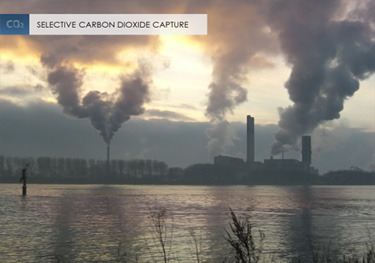

Carbon dioxide is typically considered a waste product since it is commonly released as a result of combustion, and its production is ever-increasing as the world’s energy demands grow. Due to the threat of climate change, substantial efforts have been made into CO2 capture and storage. The next step forward is the conversion of CO2 into value-added products such as formic acid and methanol, and is being investigated as a highly desirable use of such an abundant starting material. An ideal material for this application would be (i) reusable without loss of activity, (ii) be employed in a flow-type system rather than by batch reaction, (iii) be selective and high-yielding for the desired product, and (iv) could be used under mild conditions. However, while progress has been made, such a material has not yet been commercially developed.
Metal-organic frameworks (MOFs), with their porosity and highly functionalizable nature, are hugely promising for such applications since these materials can be designed with the desired pore environment and size to perform heterogeneous catalysis. MOFs can be used as an environment to concentrate CO2 and catalyze its conversion. Thus, CENCEA is currently exploring the synthesis of new heterogeneous MOF platforms, which can simultaneously capture and convert CO2.